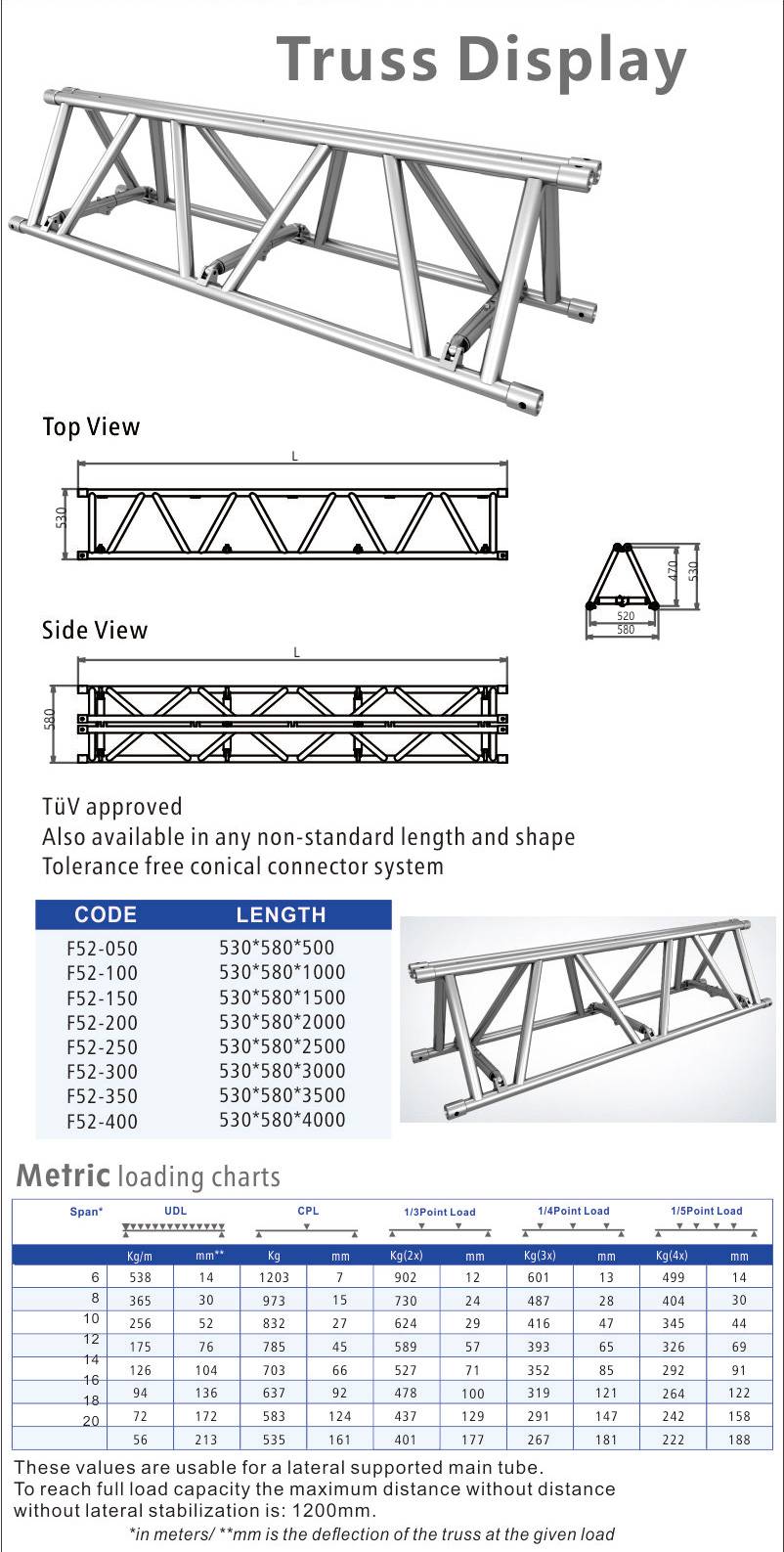What Are You Looking For?
folding truss serves as a crucial component of the infrastructure supporting a wide array of events and settings. From the technologically advanced displays of stage lighting exhibitions to the dynamic presentations of sport hall trade fairs and the intricate lighting designs of theatrical productions, folding truss provides a versatile, robust, and adaptable solution. Its inherent modularity, ease of assembly and disassembly, and increasing sophistication through the adoption of advanced materials and design techniques ensure its continued prominence in shaping the visual landscapes of these diverse applications. The convergence of these seemingly disparate fields around this common infrastructure highlights the essential role of effective and adaptable spatial management in creating impactful and memorable experiences.
Stage lighting exhibitions represent a crucial intersection of artistry and technology. These events showcase the latest innovations in lighting fixtures, control systems, and associated technologies. The effective display of these products necessitates a flexible and adaptable infrastructure. Folding truss, with its inherent modularity and ease of assembly, provides the ideal platform. Exhibitors can construct customized booth structures, incorporating lighting rigs at various heights and angles. This allows for dynamic demonstrations of lighting effects, showcasing the capabilities of different products in realistic simulated environments. The portability and ease of storage of folding truss are also significant advantages, reducing setup and dismantle times and minimizing transportation costs for exhibitors. Furthermore, its lightweight yet sturdy nature allows for relatively quick and easy adjustments throughout the exhibition, accommodating last-minute changes or impromptu demonstrations.
Sport hall trade fairs present a different, yet equally important, application for folding truss. These events, often showcasing sporting equipment, apparel, and related technologies, require robust and reliable infrastructure to support various displays and presentations. Folding truss can be used to construct elevated platforms for product demonstrations, create visually appealing exhibition stands, and integrate lighting systems to highlight specific products or create atmospheric effects. The ability to quickly reconfigure the truss structure allows organizers to accommodate changes in floor plan, seamlessly adapting to the needs of different exhibitors. The inherent strength of the truss system is crucial in these high-traffic environments, ensuring the safety and stability of the displays and preventing potential accidents.

The theatrical application of folding truss is perhaps the most established and widespread. In traditional theater settings, folding truss forms the backbone of the stage's lighting and sound infrastructure. It provides a robust and customizable system for hanging lighting fixtures, speakers, and other stage equipment. The modularity allows for complex rigging arrangements tailored to the specific demands of a production. The ease of assembly and disassembly is crucial for efficient stage setup and strike, minimizing downtime between performances. Moreover, the use of folding truss allows for creative lighting design, facilitating intricate lighting plots and dynamic effects that enhance the theatrical experience. Modern theater productions frequently employ advanced lighting technologies, and folding truss provides the essential infrastructure for supporting the weight and precise positioning of these sophisticated equipment.
The evolution of folding truss itself is noteworthy. Traditional steel truss systems are increasingly being complemented by lightweight aluminum alternatives, offering improved portability and ease of handling without compromising structural integrity. Furthermore, the integration of advanced materials and design techniques has led to the development of more aesthetically pleasing truss systems, minimizing visual intrusion and maximizing the visual impact of the performance or display. The introduction of intelligent truss systems, incorporating features such as integrated power and data conduits, streamlines the setup process and enhances the efficiency of the overall infrastructure.
